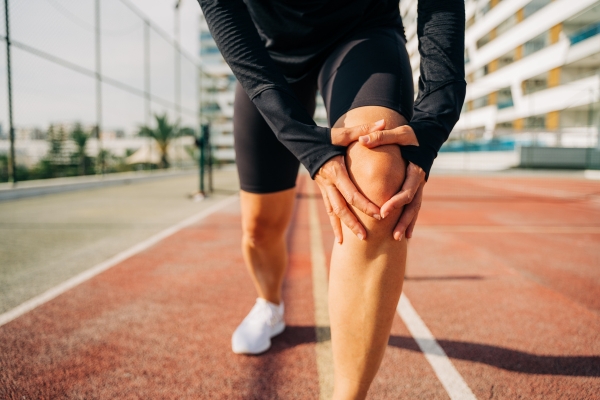
When you squat down, run or lift an object, you may hear a popping sound coming from your knee. In most cases, this noise indicates age-related joint changes or crepitus, a condition caused by friction between the bone and cartilage.
On the other hand, popping might be a precursor to osteoarthritis or indicate you have developed a meniscus tear. Learn about the potential sources of this sound and when to seek treatment.
What’s Behind the Knee Popping Sound?
There are several issues that could be causing your knee to pop, including:
- Synovial Fluid: A membrane containing this fluid covers all joints in your body and allows for smooth movement and usage. However, bubbles can accumulate in the synovial fluid that once released, make a snapping or popping sound. This can occur as the bone and cartilage grind against each other.
- Cartilage: An age-related change, cartilage can unevenly wear away over time. When you move, the worn cartilage passes over the bone or ligaments, which creates a cracking or popping noise.
- Knee Structure: When the kneecap or patella is not aligned with the rest of the bones, you may hear and feel popping. Injury to this area, including the kneecap and surrounding tissues, is frequently accompanied by pain and swelling.
Sources of a Popping Knee
Your knee may be popping in response to one of the following conditions.
Air Bubbles
For people of all ages, air bubbles can accumulate in the synovial fluid. Known as crepitus, these get released when the knee is bent or stretched.
Meniscus Tear
A meniscus tear occurs in response to the cartilage between the shin and thigh bones tearing. Damage may be gradual in response to age, poor positioning or an injury.
Not only will you hear a popping sound, but it may feel as if something in your knee is repeatedly catching on another part. This sensation may be accompanied by swelling, pain and your knee could feel locked, abnormally loose or unable to fully move. This condition may heal on its own or require corrective surgery.
Osteoarthritis
Cracking can indicate you’re developing osteoarthritis of the knee from years of wear placed on the cartilage. Ignoring the cracking and popping will cause the condition to get progressively worse, as the cartilage continues to break down.
Tendonitis
Tendons in this area can become swollen and get caught or trapped around the edges of a joint, potentially becoming iliotibial band tendonitis. You may feel the tendon moving or catching right below the surface of the skin.
Cartilage Injury
Gradual wear or an injury can result in damaged cartilage. You may notice inflammation or swelling around the area or find you have limited range of motion. It may feel as if the bones in your knee grind together as you move.
Patellar Injuries
Popping may relate to an injury around the patella. Common conditions include:
- Patellar Tendon Tear: The tendon located between the kneecap and shinbone experiences a tear. You may see bruising or an abnormal depression in this area and find that you can’t fully straighten your leg.
- Patellar Femoral Syndrome: This condition occurs when the patella doesn’t align with the trochlear groove. Along with popping and a grinding sensation, you may find that you can’t straighten your leg.
- Runner’s Knee: A high level of stress placed on the patella may wear away the surrounding cartilage, causing patellofemoral stress syndrome. This condition, also known as runner’s knee, can occur due to over-training, running on an incline or uneven terrain, or falling hard directly onto the knee.
Ligament Injuries
When popping is followed by pain and swelling, this may indicate a torn ACL or MCL, sprained LCL or damage to the posterior cruciate ligament (PCL).
Treatment for Knee Popping
In most cases, rest, ice and taking an anti-inflammatory drug can reduce swelling and discomfort. However, popping that doesn’t go away or causes pain can indicate a more significant injury.
Other signs of a knee injury include:
- Symptoms that don’t improve with rest and staying off the knee.
- Over-the-counter pain relivers have no effect.
- The knee looks discolored.
- You feel sharp pain in one location, often accompanied by swelling, redness and tenderness.
- You can’t stand or put weight on your knee.
- You’re beginning to feel numbness in the knee.
Based on the condition, you may be asked to adjust your exercise routine, undergo surgery, spend more time resting or attend a series of physical therapy sessions.
Long term, you’ll be steered toward the following strategies to reduce risk of another knee injury:
- Weight loss
- Wearing more supportive, better-fitting footwear
- Warmup exercises that focus on strengthening the knee
- Flexibility exercises to regain and maintain a full range of motion in the knee
- Strengthening the muscles around the knee, including quadriceps and hamstrings
Are you recovering from a knee injury? Work with the physical therapists at Integrated Rehab to regain mobility, improve your form and strengthen related muscles. Contact us to schedule an appointment today.

